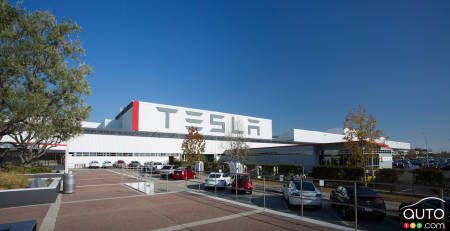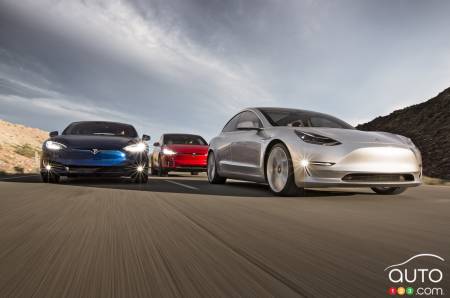Microchip shortage? What microchip shortage? EV maker Tesla, which it should be pointed out produces its own chips in-house, seems not to have been bothered by supply-chain issues all that much in 2021, delivering 936,172 vehicles in the year just ended, according to a report by finance news outlet Finbold. That represents a healthy 87 percent increase over 2020, when the company handed over 499,550 Teslas to customers.
Even better for the company, it ended the year with a bang, racking up a record number of sales in the last quarter of 2021, or 308,600 units. Most of that total consisted of Model 3 and Model Y models, no surprise. It’s the sixth consecutive quarter that it breaks its record for sales.
In 2019, the automaker delivered 367,500 units, so annual sales growth, while not exponential, is clearly accelerating. The company has said in the past that one its main goals is to attain 50 percent sales growth year after year.
Once upon a time, Tesla struggled mightily to hit its delivery targets, but no more.
There’s also no sign of that growth slowing down any time soon, even as all-electric rivals join the market by the month. Projections made by Finbold put estimated sales for 2022 at over 1.5 million units, for an increase of close to 65 percent.

Part of that growth will be spurred by the start of production in the first part of 2022 at new Tesla plants being built in Texas and in Germany. And it will come not just in spite of the chip shortage but also despite ongoing logistics problems caused by the coronavirus epidemic. To overcome that challenge, Tesla has ramped up production at its first overseas plant, in Shanghai, China, so that fewer components need to be shipped overseas. It has also bypassed some parts altogether in the cars it has been producing at its California plant to prevent nearly completed vehicles sitting at the factory waiting for parts.
One element that could affect Tesla’s sales figures is the arrival of several all-electric models from major manufacturers that could eat away at the automaker’s dominance of the EV market. For instance, Ford’s Mustang Mach-E and VW’s ID.4 are already on the market, and 2022 will – or should – see the debuts of the Kia EV6, Nissan Ariya, Hyundai Ioniq 5 and more. But all of those face two major hurdles: Tesla has an army of loyal buyers that it has had years to build up and solidify, and the supplies of those other EVs could be extremely limited at the outset.
It may thus be 2023 before we can really see if Tesla’s major future rivals can make a dent in its armour.
Stay tuned.


